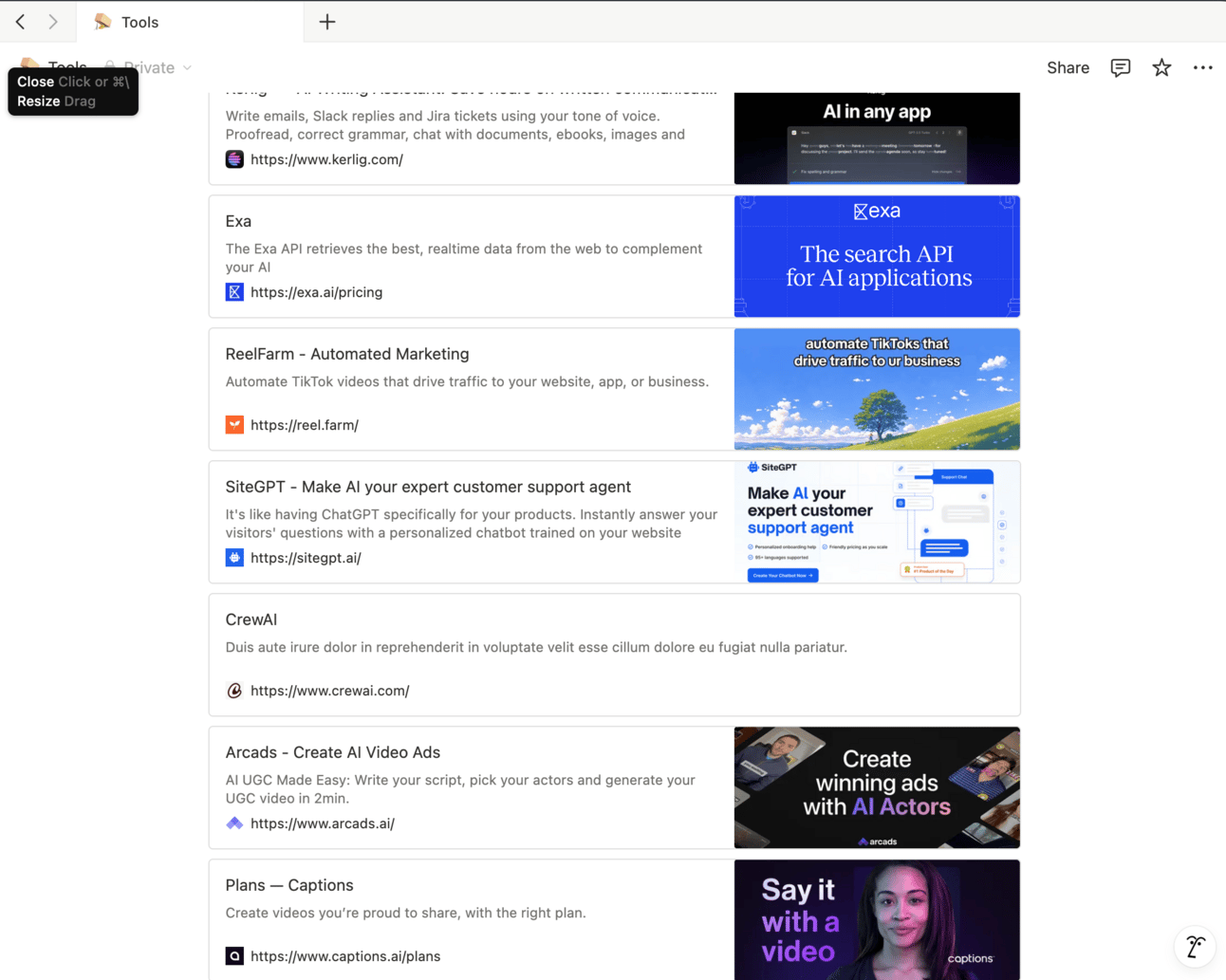- The Newsletter AI Toolkit
- Posts
- How to set up a writing system for your newsletter
How to set up a writing system for your newsletter
Writing consistently is the toughest part of running a newsletter. This guide walks you through how to set up a simple workflow that makes it a lot easier.

Your newsletter needs a writing system. Here’s how to build it.
TL;DR: Writing is the most difficult part of running a newsletter, but with a simple system, a bit of prep, and the right tools (including AI), you can make it a repeatable habit instead of a last-minute struggle.
Quick Hits
Newsletter advertising is turning writers into Sales Reps.
Five newsletter must-haves to improve deliverability.
The newsletter writing system for consistency and growth
I’ve launched dozens of newsletters. I’ve helped companies and individuals launch theirs too. And I can tell you… The hardest part of running a newsletter is writing it.
Consistency is everything. But it’s also the first thing to break.
Even people who write for a living (journalists, marketers, content creators) struggle to carve out the time. And when they do, the blank page hits just as hard.
I was talking to a journalist recently who’s launching her own newsletter. She told me that, even though writing is her job, sitting down every week to write something personal and structured still feels like a challenge. And she’s not alone.
So how do you build a system that makes writing your newsletter easier, and more consistent?
Here’s what I recommend, and what I personally do:
1. Writing Doesn’t Start When You Sit Down to Write
That’s the first mindset shift. Writing your newsletter is a 24/7 process. Not in terms of effort, but in terms of awareness.
I keep a running doc (Notion, Google Docs, doesn’t matter) open at all times.
If I come across a good link, an idea, a stat, a random tweet, I drop it there immediately. Whether I’m researching intentionally or just scrolling on autopilot, if something grabs my attention, it goes in the doc.
Don’t rely on memory. Build the habit of catching ideas in the wild.
2. Save Fragments of Thought
In that same doc (or a second one) I write down incomplete thoughts.
If I’m in the middle of something and a newsletter topic pops into my head, I jot it down. These fragments are gold later on. They reconnect you with your own thinking, and often turn into opening paragraphs or entire sections.
You don’t need to have a fully formed idea. Write down the seed and come back to it.
Sometimes I even note topics I don’t understand but want to explore. That curiosity turns into research, then content.
3. Make Writing a Routine
This sounds obvious, but most people treat writing their newsletter like something they’ll “get around to.” That’s a trap.
Put it on your calendar. Same day, same hour. If an idea isn’t flowing, work on another part: structure, links, layout. Just show up.
And if you’re tempted to say, “I’ll do it later,” remind yourself that later rarely comes.
4. Use AI, please
Don’t ignore how helpful AI can be.
Set up a dedicated ChatGPT folder with clear instructions: what kind of newsletter you write, your tone, your readers, your goals. Treat it like a junior collaborator.
Use it to:
Organize ideas
Turn fragments into paragraphs
Explore topics you’re unsure about
Polish intros and tighten up structure
Writing is still your job. But with AI, you’re never really starting from zero.
5. Write Ahead When You’re Inspired
When you’re in the zone, don’t stop at one issue.
Write drafts for future editions. Even a half-finished outline or a strong intro is a win. Your future self will thank you when the deadline sneaks up and you’re not in the mood.
6. Build a Workflow
If you find yourself doing the same steps every time (gathering links, writing, formatting, publishing), then create a system.
We’ve helped teams build newsletter writing workflows with automations and templates. It makes the process smoother and more repeatable.
The less mental overhead it takes to start, the more likely you are to keep showing up.
Writing is still the hardest part. But it doesn’t have to be a constant struggle.
Were you forwarded this email? Click here to subscribe.
